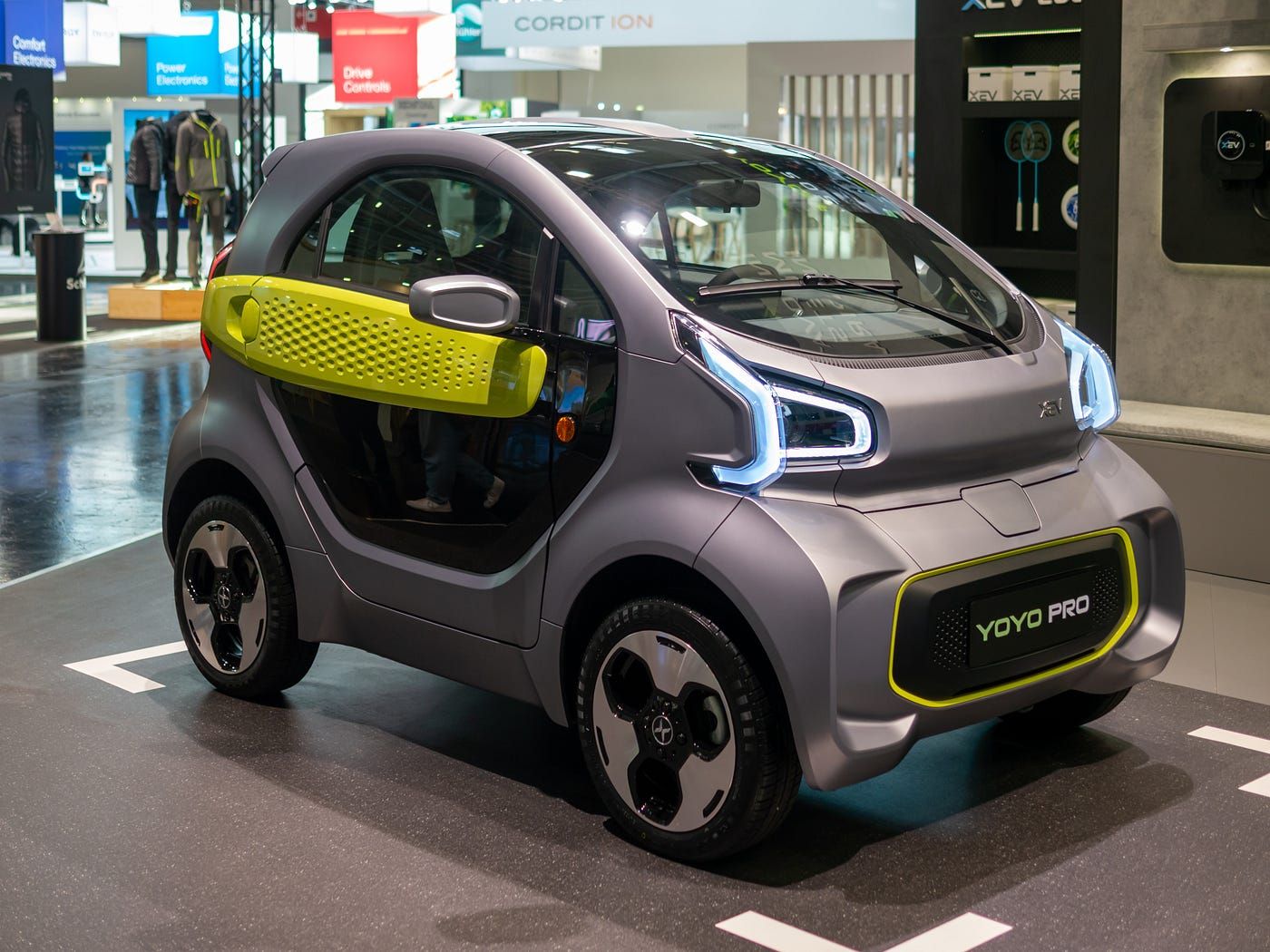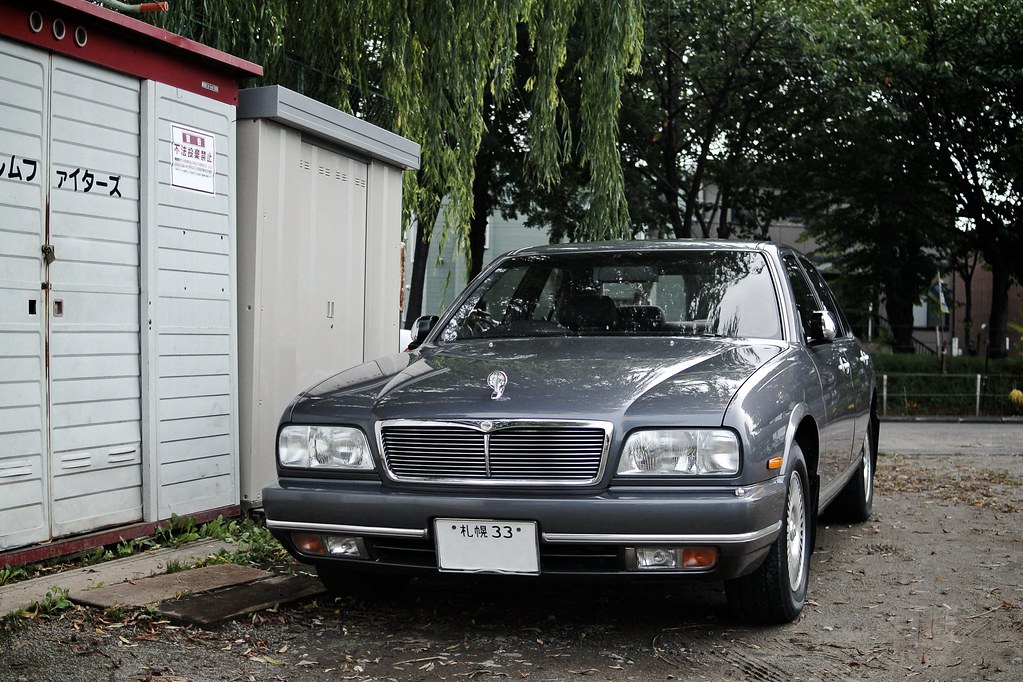
Elon Musk, the visionary entrepreneur behind groundbreaking ventures like Tesla, SpaceX, and The Boring Company, is widely recognized not only for his technological innovations but also for a remarkably distinctive taste in automobiles. His extensive car collection serves as a tangible reflection of his deep-seated passion for engineering brilliance and innovative design, encompassing an eclectic mix of Tesla’s pioneering electric vehicles alongside some of the world’s rarest supercars. This curated fleet underscores Musk’s unwavering commitment to pushing the boundaries of what is possible, both in the realm of advanced technology and automotive aesthetics. His garage is a testament to a journey defined by calculated risks and a relentless pursuit of perfection.
Musk’s automotive choices offer a unique lens through which to understand his broader entrepreneurial philosophy. His collection is far more than a mere display of wealth; it functions as a narrative of his evolution, passions, and overarching vision. From the earliest vehicles that marked his humble beginnings to the high-performance machines that fueled his aspirations, each car within his possession tells a story of automotive evolution and personal drive. It showcases a profound respect for history while simultaneously casting a clear vision for the future of transportation.
For those curious about the individual behind the headlines, this in-depth exploration of Elon Musk’s car collection provides a fascinating glimpse into his automotive world. We delve into the significance, specifications, and compelling stories behind some of the most prominent vehicles housed in his garage. Our journey begins by examining the foundational cars that influenced his early years, exploring their characteristics and the role they played in shaping his perspective on vehicle design and performance, ultimately setting the stage for his revolutionary impact on the automotive industry.
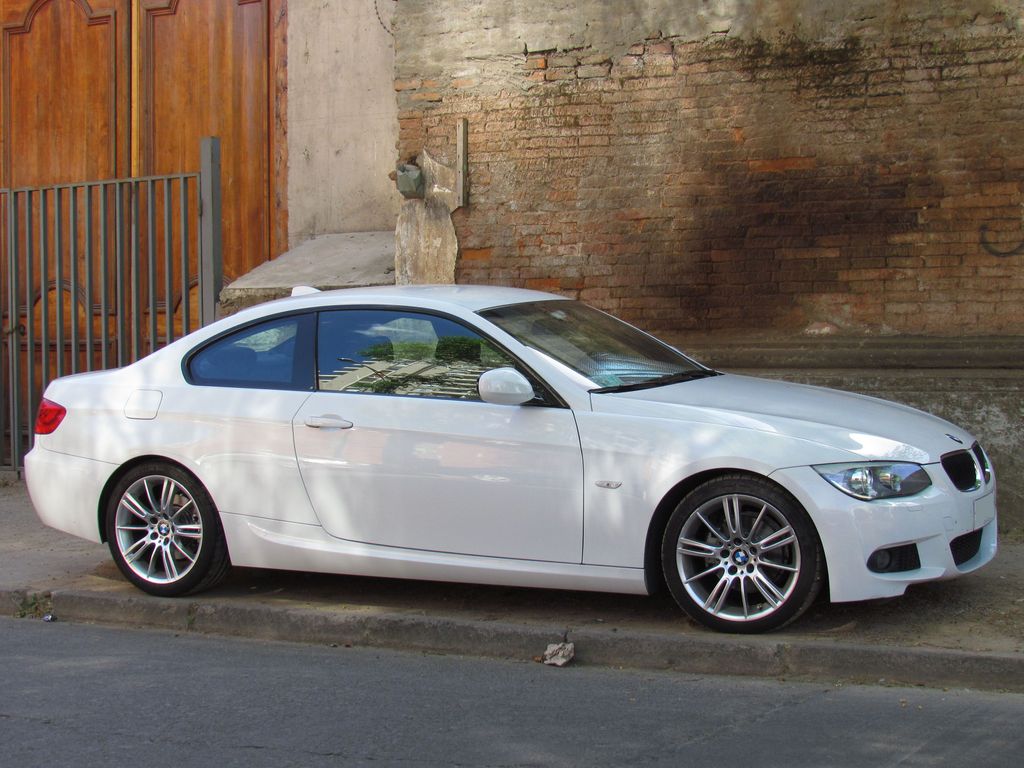
1. 1978 BMW 320i: The Humble Beginning
Elon Musk’s entry into car ownership began quite modestly in 1994 with a 1978 BMW 320i, which he acquired for a mere $1,400. This specific model holds a notable place in automotive history as the inaugural generation of the celebrated BMW 3 Series, a line that first debuted at Munich’s Olympic Stadium in 1975. The vehicle itself was powered by a 2.0-liter inline-four engine equipped with fuel injection, delivering a respectable 110 horsepower and capable of reaching a top speed of 112 mph.
This BMW was not merely a mode of transport for Musk; it was a project. During his time working on Zip2, his first company, Musk was known to personally tinker with and modify the car, exemplifying his hands-on approach to problem-solving and innovation from an early stage in his career. This initial experience reflects his roots, showcasing a characteristic drive to learn and improve, traits that would later define his groundbreaking ventures.
However, the car’s tenure with Musk met an unfortunate end when an intern at Zip2 was using it, and one of the wheels unexpectedly fell off. This incident led Musk to decide against keeping the car, marking the end of his ownership of this particular vehicle. Despite its brief and somewhat tumultuous history with him, the 1978 BMW 320i remains a poignant symbol of Musk’s humble beginnings before his rise to global prominence.
Car Model Information: 1983 BMW 320 i
Name: BMW 3 Series
Manufacturer: BMW
Production: 1975–present
Class: Compact executive car
Predecessor: BMW 02 Series
Categories: 1970s cars, 1980s cars, 1990s cars, 2000s cars, 2010s cars
Summary: The BMW 3 series is a line of compact executive cars manufactured by the German automaker BMW since May 1975. It is the successor to the 02 series and has been produced in seven generations.
The first generation of the 3 Series was only available as a 2-door saloon; the model range expanded to include a 4-door saloon, 2-door convertible, 2-door coupé, 5-door estate, 5-door liftback (“Gran Turismo”; discontinued in 2019) and 3-door hatchback body styles. Since 2013, the coupé and convertible models have been marketed as the 4 Series; these styles no longer being included in the 3 Series.
The 3 Series is BMW’s best-selling model line, accounting for around 30% of the BMW brand’s annual total car sales, and has won numerous awards throughout its history. The M version of the 3 series, M3, debuted with the E30 M3 in 1986.
Get more information about: BMW 3 Series
Buying a high-performing used car >>>
Brand: BMW Model: 320i
Price: $16,999 Mileage: 155,889 mi.
Read more about: From Humble Beginnings to Electric Dreams: A Deep Dive into Elon Musk’s Electrifying and Eclectic Garage

2. 1997 McLaren F1: The Ultimate Supercar
Following the successful acquisition of his company, Elon Musk indulged in a significant luxury purchase: the 1997 McLaren F1. This vehicle is often celebrated as one of the greatest supercars of all time, distinguishing itself with a top speed of 240 mph and revolutionary design features. His specific F1, number 067, was exceptionally rare, being one of only seven of its make in the United States at the time of his ownership.
Musk’s McLaren F1 boasted a powerful 6.1-liter V12 naturally aspirated engine, which produced an astounding 627 horsepower. Capable of a top speed exceeding 240 mph, it was once recognized as the fastest production car in the world. Musk reportedly drove this car extensively, covering over 11,000 miles, frequently using it as his daily driver during his early entrepreneurial ventures between Los Angeles and San Francisco.
Despite his confidence that he wouldn’t be among the wealthy individuals who crashed their sports cars, Musk did indeed crash his silver supercar three years later while attempting to impress PayPal co-founder Peter Thiel. Although he emerged unharmed, the vehicle sustained significant damage. After spending millions on repairs, Musk ultimately sold the car in 2007 at a profit, citing the constant attention associated with owning such a high-performance gas guzzler as a factor in his decision.
Read more about: From Humble Beginnings to Electric Dreams: A Deep Dive into Elon Musk’s Electrifying and Eclectic Garage
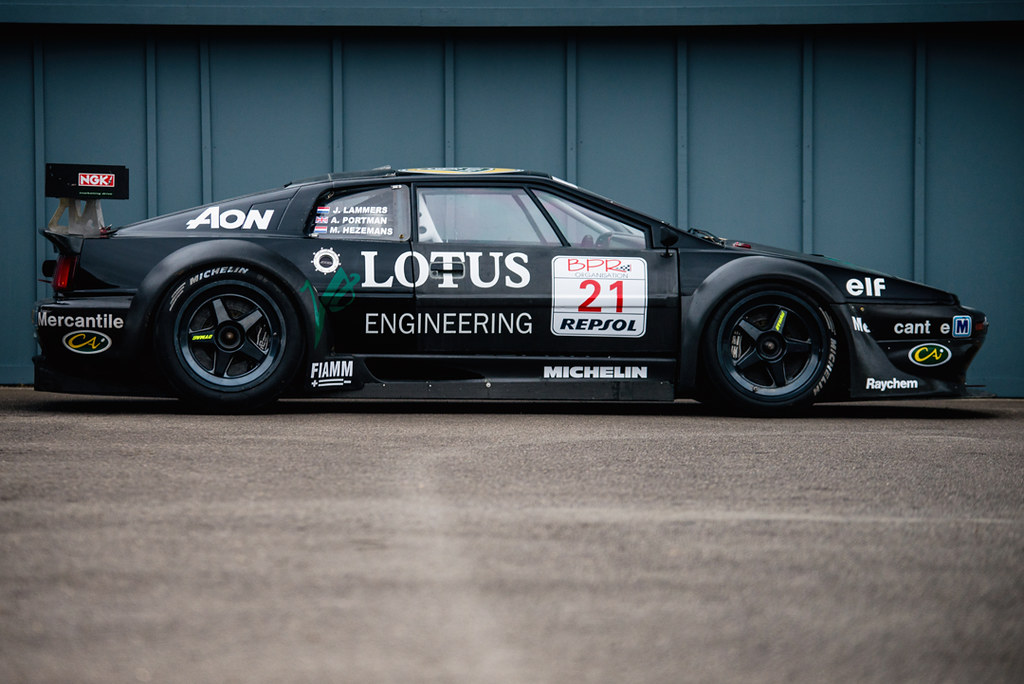
3. 1976 Lotus Esprit, aka Wet Nellie: A James Bond Fantasy
Perhaps one of the most eccentric and fascinating vehicles in Elon Musk’s collection is the 1976 Lotus Esprit, famously nicknamed “Wet Nellie” from its iconic appearance in the James Bond film *The Spy Who Loved Me*. Musk acquired this legendary car at a 2013 auction for nearly a million dollars, driven by childhood memories of watching Bond’s car transform into a submarine on screen.
This specific Lotus Esprit S1 was an iconic prop used in the film, and the idea of a car capable of turning into a submarine captivated Musk deeply. It was, however, later discovered that the “Wet Nellie” could not, in fact, truly turn into a functional submarine, much to Musk’s expressed disappointment. The vehicle was built as an underwater prop by a Florida company for $100,000.
Musk has openly expressed ambitions to upgrade the car, intending to integrate a Tesla electric powertrain to actually enable its transformation into a real submarine, blurring the lines between fiction and engineering reality. While he did not drive it regularly, this unique classic, with its distinctive wedge-shaped design and pop-up headlights, clearly showcases Musk’s flair for the unconventional and his enduring fascination with blending visionary concepts with tangible engineering.
Car Model Information: 2003 Lotus Esprit Base
Name: Lotus Esprit
Caption: 1999 Lotus Esprit V8
Manufacturer: Lotus Cars
Production: 1976–2004,10,675 produced
Assembly: Hethel,Norfolk,England
Class: Sports car
BodyStyle: coupé
Layout: Longitudinal engine,Rear mid-engine, rear-wheel-drive layout
Sp: uk
Predecessor: Lotus Europa
Successor: Lotus Europa S
Categories: 1980s cars, 1990s cars, 2000s cars, 24 Hours of Le Mans race cars, All Wikipedia articles written in British English
Summary: The Lotus Esprit is a sports car built by Lotus Cars from 1976 to 2004 at their Hethel, England factory. It has a rear mid-engine, rear-wheel-drive layout. Together with the Lotus Elise / Exige, it is one of Lotus’ most long-lived models.
The Esprit was among the first of the (near) straight-lined, hard-edge creased, and sometimes wedge-shaped, polygonal “folded paper” designs of the prolific, and highly successful Italian industrial and automotive designer Giorgetto Giugiaro. The Esprit’s backbone chassis was later adapted to carry the body of the DeLorean car, another low-bodied, Giugiaro-drawn, sharp-creased, wedge-shaped sportscar design. In 1978, the first updates led to the series 2 and 2.2 L (134 cu in) engined Esprit S2.2, made until the 1982–1988 Series 3 and Turbo Esprit models, that used a 1980 Giugiaro designed aerodynamic and aesthetic restyling package.
The Lotus Esprit however, lived on through the 1990s, and into the 2000s. It received its first significant restyling by designer Peter Stevens, who also did styling on the McLaren F1. Stevens gave the Esprit overall softer lines and shapes, but the car did not get a new series number – it is instead often just called the ‘Stevens Esprit’, or by its project number, the X180, made from 1988 to 1994.
In 1994, an official Series 4 Esprit, drawn by designer Julian Thomson, had a further rounded shape, especially the bumper sections and lower body of the car. Styling-wise, this became the most long-lived Esprit (1994–2004), only receiving its last changes, by Russell Carr in 2002.
Over the years, the performance of the Esprit’s 4-cylinder engine was increased from around 150 PS (148 hp; 110 kW) and just under 200 N⋅m (148 lb⋅ft) of torque, to double those power figures, mainly through greater inlet and exhaust flow, and strong turbo-charging. And from 1996, a new 3.5 L (214 cu in) V8 twin-turbo engine was added, offering 355 PS (350 hp; 261 kW). Contrary to a long list of low-volume British (sports) cars, with the 3.5 l Rover V8 engine, the Esprit received a Lotus in-house designed V8. Top speed rose from some 214 km/h (133 mph) in 1976, to over 280 km/h (174 mph) for the V8, twenty years later.
After a 28-year production run, the Esprit was one of the last cars made with pop-up headlights, together with the 5th generation Chevrolet Corvette.
Get more information about: Lotus Esprit
Buying a high-performing used car >>>
Brand: Lotus Model: Esprit
Price: $71,000 Mileage: 28,000 mi.

4. 1920 Ford Model T: A Gift of Automotive History
A rather surprising, yet fitting, addition to Elon Musk’s collection is the 1920 Ford Model T, often affectionately referred to as the “Tin Lizzie.” This particular vehicle, gifted to Musk by a friend, holds a pivotal place in automotive history. It stands as the first mass-produced car, a revolutionary achievement made possible by Henry Ford’s innovative assembly line techniques.
Launched in 1908, the Model T fundamentally transformed personal mobility by making car ownership accessible to the general public, initially with a starting price of just $850. Its simple yet remarkably robust design, powered by a 2.9-liter inline-four engine producing 20 horsepower, irrevocably changed the world. This profound impact earned it the esteemed title of the most influential car of the 20th century.
For Musk, a known disruptor in numerous industries, owning this specific piece of history profoundly underscores his appreciation for pioneers who have successfully reshaped industries. His possession of this groundbreaking car from 1908 highlights his admiration for innovative engineering and the fundamental evolution of the automobile, resonating deeply with his own aspirations to revolutionize terrestrial and interstellar transportation through companies like Tesla and SpaceX.
Car Model Information: 2021 Kia Sorento S
Caption: 1925 Ford Model T Touring Car
Manufacturer: Ford Motor Company
Production: October 1908 – May 1927
Assembly: collapsible list
Designer: Childe Harold Wills
Class: Economy car
BodyStyle: collapsible list
Layout: FMR layout
Engine: straight-4
Transmission: planetary gear
Wheelbase: 100.0 in
Abbr: on (1912 roadster)
Length: 134 in
Width: 1676 mm
Height: 1860 mm
Weight: convert
Predecessor: Ford Model N
Successor: Ford Model A (1927–1931)
Categories: 1900s cars, 1908 establishments in the United States, 1910s cars, 1920s cars, All articles needing additional references
Summary: The Ford Model T is an automobile that was produced by the Ford Motor Company from October 1, 1908, to May 26, 1927. It is generally regarded as the first mass-affordable automobile, which made car travel available to middle-class Americans. The relatively low price was partly the result of Ford’s efficient fabrication, including assembly line production instead of individual handcrafting. The savings from mass production allowed the price to decline from $780 in 1910 (equivalent to $26,322 in 2024) to $290 in 1924 ($5,321 in 2024 dollars). It was mainly designed by three engineers, Joseph A. Galamb (the main engineer), Eugene Farkas, and Childe Harold Wills. The Model T was colloquially known as the “Tin Lizzie”.
The Ford Model T was named the most influential car of the 20th century in the 1999 Car of the Century competition, ahead of the BMC Mini, Citroën DS, and Volkswagen Beetle. Ford’s Model T was successful not only because it provided inexpensive transportation on a massive scale, but also because the car signified innovation for the rising middle class and became a powerful symbol of the United States’ age of modernization. With over 15 million sold, it was the most sold car in history before being surpassed by the Volkswagen Beetle in 1972.
Get more information about: Ford Model T
Buying a high-performing used car >>>
Brand: Ford Model: Model T
Price: $21,490 Mileage: 58,957 mi.
Read more about: From Land Yachts to Roadsters: Mike Wolfe’s Remarkable Personal Collection of Iconic Vehicles
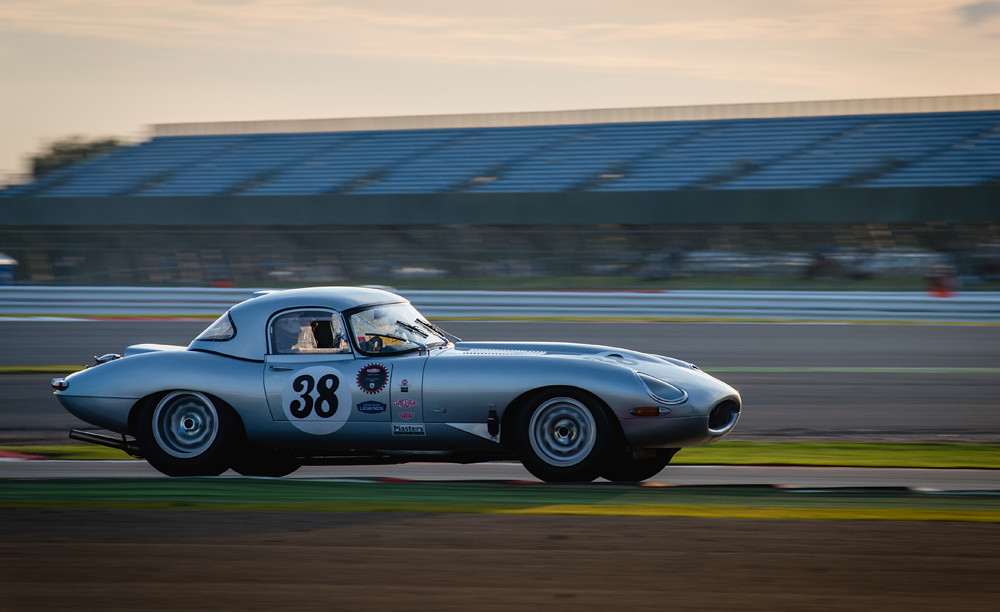
5. 1967 Jaguar E-Type Roadster: A Childhood Dream
Elon Musk’s enduring love for cars truly took root at the impressionable age of 17 when he encountered a book showcasing classic convertibles and was instantly captivated by the 1967 Jaguar E-Type Roadster. This vehicle is frequently lauded as one of the most beautiful cars ever manufactured, with even Enzo Ferrari famously calling it “the most beautiful car in the world.” The E-Type masterfully combined breathtaking design with impressive performance capabilities.
Musk’s specific model features a potent 4.2-liter inline-six engine, which delivered 265 horsepower and 283 lb-ft of torque, representing a significant upgrade from earlier versions. After the successful launch of Zip2 and receiving $40,000 from investors, Musk fulfilled his long-held childhood dream by acquiring this iconic British convertible.
However, his experience with the British Roadster did not unfold as he had envisioned. The car proved to be notoriously unreliable, breaking down on the very drive home from the dealership. It continued to present challenges throughout his ownership, leading Musk to famously quip that the Jaguar was like a “terrible girlfriend who kept pulling all sorts of drama and creating difficulties.” Despite these frustrations, he still owns this timeless classic, which stands as a powerful symbol of his deep passion for automotive artistry.
Car Model Information: 1971 Jaguar E-Type Restomod
Sp: uk
Name: Jaguar E-Type
Caption: 1961 E-Type Series 1 3.8-Litre, the first production model of this open two-seater
Aka: Jaguar XK-E (North America),Jaguar V-12
Manufacturer: Jaguar Cars
Production: 1961–1974
Class: Sports car
Predecessor: Jaguar XK150
Related: Jaguar D-Type,Jaguar XJ13
Successor: Jaguar XJS
Layout: FMR layout
Assembly: Coventry,England
Designer: Malcolm Sayer
Categories: 1970s cars, 2+2 coupés, All Wikipedia articles written in British English, All articles with dead external links, All articles with specifically marked weasel-worded phrases
Summary: The Jaguar E-Type, or the Jaguar XK-E for the North American market, is a British front mid-engined sports car that was manufactured by Jaguar Cars Ltd from 1961 to 1974. Its sleek appearance, advanced technologies, high performance, and competitive pricing established it as an icon. The E-Type’s claimed 150 miles per hour (240 km/h) top speed, sub-7-second 0 to 60 mph (97 km/h) acceleration, largely unitary body construction, front and rear independent suspension with disc brakes, mounted inboard at the rear, and rack-and-pinion steering spurred industry-wide changes.
The E-Type was based on Jaguar’s D-Type racing car, which had won the 24 Hours of Le Mans for three consecutive years beginning in 1955.
The E-Type employed what was, for the early 1960s, a novel design principle, with a front subframe carrying the engine, front suspension and front bodywork bolted directly to the body tub. No ladder frame chassis, as was common at the time, was needed and as such the first cars weighed only 1,315 kg (2,899 lb).
It is rumored that, on its debut on 15 March 1961, Enzo Ferrari called it “the most beautiful car ever made”, but this statement is not fully confirmed. In 2004, Sports Car International magazine placed the E-Type at number one on their list of Top Sports Cars of the 1960s. In March 2008, the Jaguar E-Type ranked first in The Daily Telegraph’s online list of the world’s “100 most beautiful cars” of all time.
Get more information about: Jaguar E-Type
Buying a high-performing used car >>>
Brand: Jaguar Model: E-Type
Price: $64,900 Mileage: 2,455 mi.
Read more about: From Humble Beginnings to Electric Dreams: A Deep Dive into Elon Musk’s Electrifying and Eclectic Garage
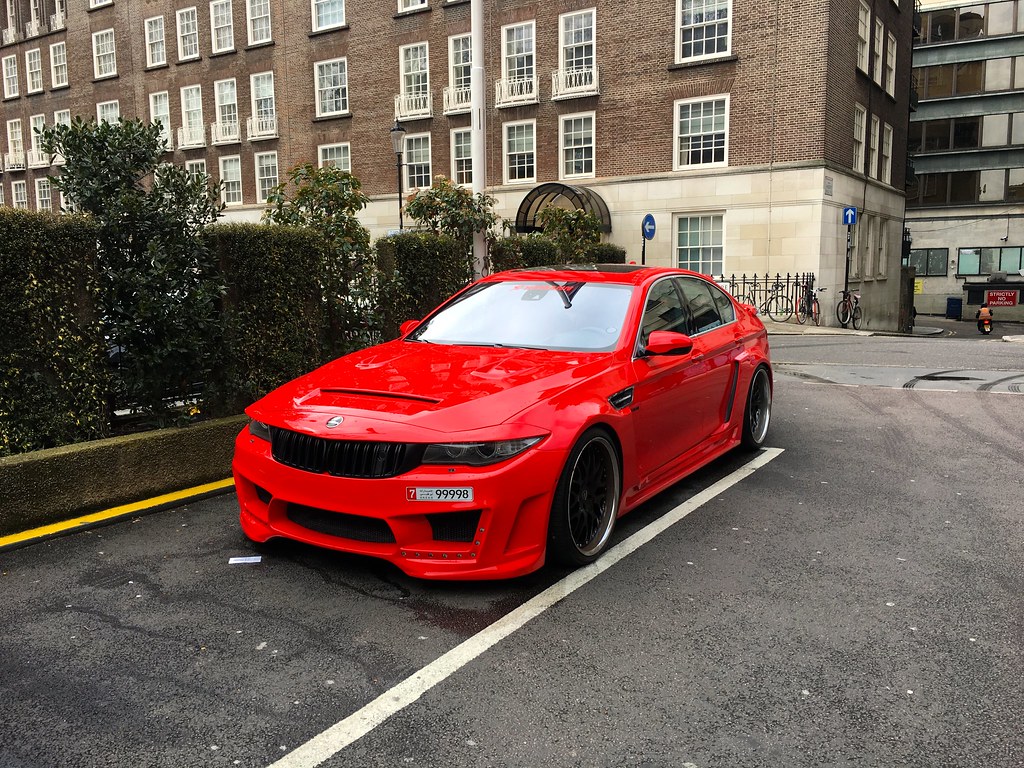
6. 2006 Hamann BMW M5: Power and Inspiration
Another significant vehicle in Musk’s collection history is a 2006 BMW M5, which underwent extensive customization by the renowned German tuning specialist, Hamann Motorsport. The M5, already an exceptional car in its standard form, was elevated to extraordinary new heights by Hamann’s enhancements. These modifications significantly boosted the performance of its 5.0-liter V10 engine, increasing its output to an impressive 603 horsepower.
Furthermore, Hamann removed the factory-imposed speed limiters, allowing the vehicle to achieve a top speed exceeding 199 miles per hour. Despite being classified as a four-seat family car, the M5’s capabilities were far from ordinary, blending remarkable power with practical design.
This high-performance sedan, while a departure from Musk’s later electric focus, reportedly played a crucial role in inspiring Tesla’s now-famous “Ludicrous Mode.” This feature, which delivers jaw-dropping acceleration in models such as the Tesla Model S, is believed to have drawn inspiration from the sheer power and speed of the Hamann-tuned M5. Although Musk no longer owns this particular vehicle, its profound influence on Tesla’s performance innovations highlights how his personal automotive experiences directly shaped his vision for sustainable transport.

7. 2010 Audi Q7: The Family-Oriented SUV
By 2010, Elon Musk’s family had significantly expanded, necessitating a larger vehicle capable of accommodating his growing household. Naturally, in addition to size, he sought out a classy and luxurious SUV. His search led him to the Audi Q7, a model known for its smooth performance, advanced high-tech features, opulent interior, and sporty aesthetic. This choice underscores his appreciation for a combination of luxury and practicality in a family vehicle.
While the Audi Q7 was undeniably one of the premier SUVs available at the time, Musk ultimately expressed dissatisfaction with it. He publicly called the car “particularly horrendous,” a strong sentiment that clearly articulated his displeasure with certain aspects of its design and functionality. This experience proved to be a significant catalyst for his future endeavors.
Musk’s frustration with the Q7 specifically pushed him to conceptualize and develop a car with superior features and enhanced convenience. This dissatisfaction directly influenced the design of the Tesla Model X, particularly its innovative falcon-wing doors. These unique doors were engineered as a direct solution to accessibility issues, allowing passengers to easily reach the rear seats even in confined parking spaces, showcasing how his personal experiences directly fueled his drive for automotive innovation.
Car Model Information: 2017 Audi Q7 3.0T Premium
Name: Audi Q7
Manufacturer: Audi AG
Production: November 2005–present
ModelYears: 2006–present
Class: Full-size,luxury SUV
BodyStyle: SUV
Layout: Longitudinal engine,front-engine, four-wheel-drive
Sp: uk
Categories: 2010s cars, 2020s cars, All-wheel-drive vehicles, All Wikipedia articles written in British English, All articles with dead external links
Summary: The Audi Q7 is a crossover SUV made by the German manufacturer Audi, unveiled in September 2005 at the Frankfurt Motor Show. Production of this seven-seater SUV began in November 2005 at the Volkswagen Bratislava Plant in Bratislava, Slovakia.
The Q7 was the first SUV sold by Audi and went on sale in 2006. Later, Audi’s second SUV, the Q5, was unveiled as a 2009 model. Audi has since unveiled a third SUV model, the Q3, which went on sale in the third quarter of 2011, and a fourth SUV model, the Q2, which went on sale in November 2016. The Q7 shares a Volkswagen Group MLB platform and chassis with the Bentley Bentayga, Lamborghini Urus, Porsche Cayenne and the Volkswagen Touareg.
The Q7 is the second largest vehicle from Audi, being surpassed by the Q6 since 2022. While the Q7 has been the flagship SUV in Audi’s product portfolio, a top-of-the-line model with a lower roof, called the Audi Q8, was released in 2018.
It was one of the vehicles involved in the Volkswagen emissions scandal, with the company ordered to buy back some of the affected cars manufactured between 2009 and 2012. The Q7 is also subject to hundreds of NTSB complaints with many relating to potentially catastrophic engine failure issues, and a class-action lawsuit related to squealing brakes.
Get more information about: Audi Q7
Buying a high-performing used car >>>
Brand: Audi Model: Q7
Price: $13,999 Mileage: 95,081 mi.
Read more about: 15 Vehicles Millennials Are Steering Clear Of: Unpacking the Generational Divide in Automotive Appreciation

8. 2021 Porsche 911 Turbo: The Catalyst for Electric Vision
Elon Musk’s journey toward electric dominance found a surprising catalyst in the 2021 Porsche 911 Turbo. While a powerhouse of traditional combustion engineering, this iconic vehicle deeply influenced Musk’s evolving vision for sustainable transport. Its presence marks a significant pivot, where his appreciation for high-performance vehicles merged with a desire for electric innovation.
The Porsche 911 Turbo, celebrated for its rich motorsport heritage and distinctive design, held a special allure for Musk. Renowned for its precision handling, speed, and sleek aesthetics, it epitomizes sports car engineering. Musk’s admiration for such automotive icons, which have consistently set benchmarks for performance and design, is well-documented.
However, the car’s powerful, gas-guzzling engine presented a dilemma for Musk. This internal conflict inspired a radical idea: converting his Porsche 911 Turbo into an electric vehicle. This ambition led him to engineer JB Straubel in 2003, initiating discussions that would prove foundational for Tesla.
Straubel, already working with Alan Cocconi on the T-Zero electric car prototype, initially viewed Musk’s conversion idea as impractical. Yet, this encounter crucially introduced Musk to the founders of an emerging electric car startup. His substantial investment in what would become Tesla stemmed directly from this interaction, demonstrating how a classic supercar ultimately sparked his revolutionary impact on the EV industry.
Car Model Information: 2021 Kia Sorento S
Name: Porsche 911
Caption: The 1 millionth 911 produced on display at Volkswagen Group Forum, Berlin
Designer: Ferdinand Alexander Porsche
Manufacturer: Porsche
Production: September 1964 – present
Assembly: Stuttgart,Baden-Württemberg
Class: Sports car
BodyStyle: unbulleted list
Related: unbulleted list
Layout: Rear-engine design,rear-wheel drive
Predecessor: Porsche 356
Categories: 1970s cars, 1980s cars, 1990s cars, 2+2 coupés, 2000s cars
Summary: The Porsche 911 model series (pronounced Nine Eleven or in German: Neunhundertelf, or colloquially Neunelfer) is a family of two-door, high performance rear-engine sports cars, introduced in September 1964 by Porsche of Stuttgart, Germany, and now in its eighth generation. All 911s have a rear-mounted flat-six engine, and usually 2+2 seating, except for special 2-seater variants. Originally, 911s had air-cooled engines, and torsion bar suspension, but the 911 has been continuously enhanced, and evolved across generations. Though the 911 core concept has remained largely unchanged, water-cooled engines were introduced with the 996 series in 1998, and front and rear suspension have been replaced by Porsche-specific MacPherson suspension up front, and independent multi-link rear suspension.
The 911 has been raced extensively by private and factory teams, in a variety of classes. It is among the most successful competition cars. In the mid-1970s, the naturally aspirated 911 Carrera RSR won world championship races including Targa Florio and the 24 Hours of Daytona. The 911-derived 935 turbo also won the 24 Hours of Le Mans in 1979. Porsche won the World Championship for Makes in 1976, 1977, 1978, and 1979 with 911-derived models.
In a 1999 poll to determine the Car of the Century, the 911 ranked fifth — one of two in the top five that had remained continuously in production (the original Beetle remained in production until 2003). The one millionth example was manufactured in May 2017 and is in the company’s permanent collection.
Get more information about: Porsche 911
Buying a high-performing used car >>>
Brand: Porsche Model: 911 Turbo
Price: $21,490 Mileage: 58,957 mi.
Read more about: From Humble Beginnings to Electric Dreams: A Deep Dive into Elon Musk’s Electrifying and Eclectic Garage

9. 2008 Tesla Roadster: A Stellar Pioneer
The 2008 Tesla Roadster holds a pivotal place in Elon Musk’s collection, representing Tesla’s debut electric vehicle and a bold challenge to conventional automotive wisdom. This car proved that EVs could deliver exhilarating performance and stylish design, effectively marking the start of Tesla’s mission to redefine personal transportation. It was a clear statement that electric could be both fast and fun.
Built on a Lotus Elise chassis and powered by innovative lithium-ion batteries, the Roadster was a technological marvel for its time. It boasted an impressive 227-mile range and could accelerate from 0-60 mph in a mere 3.7 seconds. As the very first owner, Elon Musk used this Roadster for his daily commutes for several years, a testament to his belief in his company’s vision and product.
The Roadster achieved global fame in February 2018 when Musk orchestrated its launch into space aboard a SpaceX Falcon Heavy rocket. This audacious act, complete with a dummy “Starman” playing David Bowie’s “Space Oddity,” transcended typical vehicle ownership. It captivated audiences worldwide, blending Musk’s aerospace ambitions with his automotive pioneering spirit.
Today, this iconic Tesla Roadster continues its journey, orbiting the sun as a unique artifact of both automotive history and space exploration. An unofficial website, whereisroadster.com, tracks its celestial progress, solidifying its status as a pioneering electric vehicle and a symbol of Musk’s boundary-pushing ambition to merge fiction with engineering reality.
Car Model Information: 2008 Tesla Roadster
Categories: All article disambiguation pages, All disambiguation pages, Disambiguation pages, Short description is different from Wikidata
Summary: Tesla Roadster may refer to:
Tesla Roadster (first generation), an electric sports car produced by Tesla Motors between 2008 and 2012
Elon Musk’s Tesla Roadster, a first generation Tesla Roadster that was launched into space in February 2018
Tesla Roadster (second generation), an upcoming sports car in development by Tesla, Inc.
Get more information about: Tesla Roadster
Buying a high-performing used car >>>
Brand: Tesla Model: Roadster
Price: $164,999 Mileage: 574 mi.
Read more about: From Humble Beginnings to Electric Dreams: A Deep Dive into Elon Musk’s Electrifying and Eclectic Garage
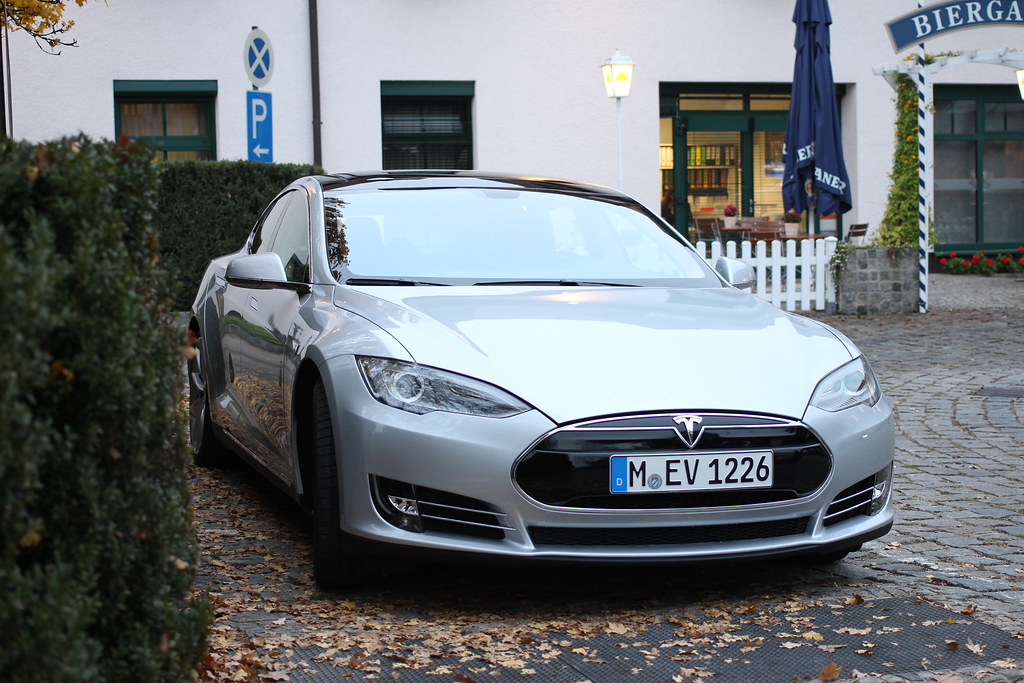
10. 2019 Tesla Model S: The Daily Driver
The Tesla Model S has become a cornerstone of Elon Musk’s personal fleet, reportedly serving as his primary vehicle for daily driving. Since its introduction in 2012, this all-electric sedan has consistently redefined the electric vehicle landscape, setting new benchmarks for luxury, performance, and practical utility. It stands as a flagship model within the burgeoning EV market.
The 2019 Model S showcases Tesla’s continuous engineering advancements, offering an impressive range of up to 405 miles. This substantial range makes long-distance electric travel highly feasible, while its formidable acceleration, achieving 0-60 mph in a swift 2.4 seconds, highlights its performance capabilities. These figures underscore Musk’s dedication to pushing the boundaries of electric sedan performance.
A key performance feature, “Ludicrous Mode,” draws direct inspiration from Musk’s experiences with high-performance internal combustion vehicles, notably his Hamann-tuned BMW M5. This mode significantly boosts the Model S’s power, delivering instant, breathtaking acceleration. This direct link from traditional performance to cutting-edge EV reflects Musk’s philosophy of integrating the best of both worlds.
Beyond raw power, the Model S is integrated with advanced technology. Its large infotainment screens provide extensive functionalities, complemented by semi-autonomous driving capabilities and automatic emergency braking. As Musk’s preferred daily driver, the Model S epitomizes the seamless blend of luxury, sustainability, and technological prowess that he champions through Tesla.
Car Model Information: 2021 Kia Sorento S
Name: Tesla Model S
ModelYears: 2013–present
Alt: A front-three quarter view of a gray Model S
Caption: #2016–2019: First major update
Designer: Franz von Holzhausen
Weight: cvt
Height: cvt
Width: cvt
Length: cvt
Wheelbase: cvt
ElectricRange: cvt
Battery: kWh,lithium-ion battery
Motor: Unbulleted list
Transmission: Reduction drive
Related: Tesla Model X
Layout: Rear-motor, rear-wheel drive,Dual-motor, all-wheel-drive,Tri-motor, all-wheel-drive layout
BodyStyle: liftback,sedan (automobile)
Class: Full-size car
Assembly: Unbulleted list
Production: June 2012 – present
Manufacturer: Tesla, Inc.
Sp: us
Chassis: Unibody
Categories: 2020s cars, All-wheel-drive vehicles, All Wikipedia articles written in American English, All articles containing potentially dated statements, Articles containing potentially dated statements from 2025
Summary: The Tesla Model S is a battery-electric, four-door full-size car produced by the American automaker Tesla since 2012. The automaker’s second vehicle and longest-produced model, the Model S has been described as one of the most influential electric cars in the industry. Car and Driver named it one of the best cars of the year in 2015 and 2016. Its various accolades include the Motor Trend Car of the Year Award in 2013.
Tesla started developing the Model S around 2007 under the codename WhiteStar, with Henrik Fisker appointed as lead designer for the project. After a dispute with Elon Musk, Tesla’s CEO, Fisker was replaced by Franz von Holzhausen who, by 2008, had designed the production Model S’s exterior. Tesla unveiled a prototype of the vehicle in March 2009 in Hawthorne, California. In 2010, Tesla acquired a facility in Fremont, California, to produce the Model S, which was previously owned by General Motors and Toyota. Series manufacture of the car officially began at the Tesla Fremont Factory in June 2012. Tesla carried out the final assembly for European markets at its facilities in Tilburg, Netherlands, between 2013 and 2021.
Constructed mostly of aluminum, the Model S shares 30 percent of its components with the Model X—a crossover SUV that was introduced in 2015. The Model S has undergone several updates during its production, the most prominent ones occurring in 2016 and 2021. These updates have usually included modifications to the motor, such as changes to power or torque, revised exterior elements, and refreshed interior features. One such change included the 2015 introduction of Tesla Autopilot—a partial vehicle automation advanced driver-assistance system. The 2021 update led to the introduction of the high-performance, three-motor Plaid—Tesla’s most powerful model.
In 2015, the Model S was the world’s best-selling plug-in electric vehicle. In 2012, it was included on Time’s list of the Best Inventions of the Year, and the magazine later included it on its list of the 10 Best Gadgets of the 2010s in 2019. In 2014, The Daily Telegraph described the Model S as a “car that changed the world”. Road & Track argued that, with the introduction of the Plaid and features such as the yoke steering wheel, Tesla managed to turn the Model S into “perhaps one of the worst [cars in the world]”.
Get more information about: Tesla Model S
Buying a high-performing used car >>>
Brand: Tesla Model: Model S
Price: $21,490 Mileage: 58,957 mi.
Read more about: The Electric Pickup Truck Showdown: A Comprehensive Review of Ford F-150 Lightning and Tesla Cybertruck

11. Tesla Model X: Futuristic Family Transport
For family duties, the Tesla Model X stands as a premier electric SUV in Elon Musk’s collection, embodying a blend of practicality and groundbreaking innovation. Launched in 2015, this vehicle directly addresses the need for spacious, yet advanced family transport. Its design was partly influenced by Musk’s dissatisfaction with prior family vehicles, like the Audi Q7.
The Model X is instantly recognizable by its signature falcon-wing doors, an innovative solution to accessibility challenges. These unique doors open upwards, allowing easy access to rear seats even in confined parking spaces, merging visionary concept with practical functionality. This distinct design not only enhances convenience but also bestows the Model X with a futuristic aesthetic.
Performance is not compromised in this family-friendly SUV. The Model X offers Ludicrous Mode acceleration, ensuring exhilarating speed when desired. Coupled with advanced Autopilot features, it enhances driving stability and moves closer to fully autonomous capabilities, reflecting Musk’s broader vision for future mobility.
Moreover, the Model X excels in safety, having earned 5-star ratings across all categories from the National Highway Traffic Safety Administration. This robust safety profile, combined with its spacious interior and eco-friendly electric powertrain, makes it an ideal choice for Musk’s family and a testament to his commitment to innovative, secure, and sustainable family vehicles.
Car Model Information: 2021 Kia Sorento S
Name: Tesla Model X
Manufacturer: Tesla, Inc.
Production: 2015–present
Assembly: unbulleted list
Designer: Franz von Holzhausen
Class: Crossover (automobile)
BodyStyle: 5-door SUV
Layout: unbulleted list
Doors: unbulleted list
Related: Tesla Model S
Motor: unbulleted list
Title: Discontinued
Transmission: unbulleted list
Battery: unbulleted list
ElectricRange: FTP-75
Wheelbase: cvt
Length: cvt
Width: cvt
Height: cvt
Weight: unbulleted list
Sp: us
Categories: 2020s cars, All Wikipedia articles in need of updating, All Wikipedia articles written in American English, All articles containing potentially dated statements, All articles lacking reliable references
Summary: The Tesla Model X is a battery electric mid-size luxury crossover SUV built by Tesla, Inc. since 2015. Developed from the full-sized sedan platform of the Tesla Model S, the vehicle uses distinctive falcon wing doors for rear passenger access.
The Model X has an EPA size class as an SUV, and shares around 30 percent of its content with the Model S, half of the originally planned 60 percent, and weighs about 10 percent more. Both the Model X and Model S are produced at the Tesla Factory in Fremont, California. The prototype was unveiled at Tesla’s design studios in Hawthorne, California, on February 9, 2012. First deliveries of the Model X began in September 2015. After one full year on the market, in 2016, the Model X ranked seventh among the world’s best-selling plug-in cars. A refresh of the Tesla Model X was introduced in 2021, offering a new “Plaid” performance model, along with a revised interior, powertrain, and suspension.Another update of the Model X was introduced in June 2025 with a new front bumper camera, new wheel designs, increased third-row space, dynamic ambient lighting, and adaptive headlights. The updates are similar to the Model S, which was updated at the same time.
As of July 2025, the Model X is available as a Long-Range version with an estimated EPA range of 352 miles (566 km) and a high performance “Plaid” version with an estimated EPA range of 335 miles (539 km).
Get more information about: Tesla Model X
Buying a high-performing used car >>>
Brand: Tesla Model: Model X
Price: $21,490 Mileage: 58,957 mi.
Read more about: The 2025 Toyota Wish Redesign: The Ultimate MPV Reimagined, and Your Guide to Finding Your Automotive Wish List Gem

12. 2022 Tesla Model S Plaid: Extreme Performance Redefined
The 2022 Tesla Model S Plaid embodies Elon Musk’s relentless pursuit of extreme performance and technological superiority in electric vehicles. This variant represents the pinnacle of EV engineering, designed to redefine what is achievable in a production car. It showcases Tesla’s capability to deliver breathtaking speed and cutting-edge technology.
The Model S Plaid is renowned for its unparalleled acceleration, capable of rocketing from 0-60 mph in just under two seconds. This blistering speed is not merely a specification; it offers an instantaneous, jaw-dropping thrust that rivals, and frequently surpasses, the performance of the most revered hypercars. This impressive feat positions the Plaid at the forefront of automotive innovation.
Beyond its incredible speed, the Model S Plaid ensures practicality with an extended range, reportedly up to 405 miles on a single charge. It integrates advanced autonomous driving capabilities, luxurious interior amenities, and a full-fledged touchscreen control pillar. These features offer a comprehensive blend of speed, luxury, and futuristic technology, pushing the boundaries of what an electric sedan can be.
The Plaid model underscores Musk’s personal quest for “more power” beyond even the impressive “Ludicrous Mode.” It reflects his drive to continuously innovate and set new performance standards, ensuring Tesla remains at the cutting edge of electric mobility.
Car Model Information: 2021 Kia Sorento S
Name: Tesla Model S
ModelYears: 2013–present
Alt: A front-three quarter view of a gray Model S
Caption: #2016–2019: First major update
Designer: Franz von Holzhausen
Weight: cvt
Height: cvt
Width: cvt
Length: cvt
Wheelbase: cvt
ElectricRange: cvt
Battery: kWh,lithium-ion battery
Motor: Unbulleted list
Transmission: Reduction drive
Related: Tesla Model X
Layout: Rear-motor, rear-wheel drive,Dual-motor, all-wheel-drive,Tri-motor, all-wheel-drive layout
BodyStyle: liftback,sedan (automobile)
Class: Full-size car
Assembly: Unbulleted list
Production: June 2012 – present
Manufacturer: Tesla, Inc.
Sp: us
Chassis: Unibody
Categories: 2020s cars, All-wheel-drive vehicles, All Wikipedia articles written in American English, All articles containing potentially dated statements, Articles containing potentially dated statements from 2025
Summary: The Tesla Model S is a battery-electric, four-door full-size car produced by the American automaker Tesla since 2012. The automaker’s second vehicle and longest-produced model, the Model S has been described as one of the most influential electric cars in the industry. Car and Driver named it one of the best cars of the year in 2015 and 2016. Its various accolades include the Motor Trend Car of the Year Award in 2013.
Tesla started developing the Model S around 2007 under the codename WhiteStar, with Henrik Fisker appointed as lead designer for the project. After a dispute with Elon Musk, Tesla’s CEO, Fisker was replaced by Franz von Holzhausen who, by 2008, had designed the production Model S’s exterior. Tesla unveiled a prototype of the vehicle in March 2009 in Hawthorne, California. In 2010, Tesla acquired a facility in Fremont, California, to produce the Model S, which was previously owned by General Motors and Toyota. Series manufacture of the car officially began at the Tesla Fremont Factory in June 2012. Tesla carried out the final assembly for European markets at its facilities in Tilburg, Netherlands, between 2013 and 2021.
Constructed mostly of aluminum, the Model S shares 30 percent of its components with the Model X—a crossover SUV that was introduced in 2015. The Model S has undergone several updates during its production, the most prominent ones occurring in 2016 and 2021. These updates have usually included modifications to the motor, such as changes to power or torque, revised exterior elements, and refreshed interior features. One such change included the 2015 introduction of Tesla Autopilot—a partial vehicle automation advanced driver-assistance system. The 2021 update led to the introduction of the high-performance, three-motor Plaid—Tesla’s most powerful model.
In 2015, the Model S was the world’s best-selling plug-in electric vehicle. In 2012, it was included on Time’s list of the Best Inventions of the Year, and the magazine later included it on its list of the 10 Best Gadgets of the 2010s in 2019. In 2014, The Daily Telegraph described the Model S as a “car that changed the world”. Road & Track argued that, with the introduction of the Plaid and features such as the yoke steering wheel, Tesla managed to turn the Model S into “perhaps one of the worst [cars in the world]”.
Get more information about: Tesla Model S
Buying a high-performing used car >>>
Brand: Tesla Model: Model S Plaid
Price: $21,490 Mileage: 58,957 mi.
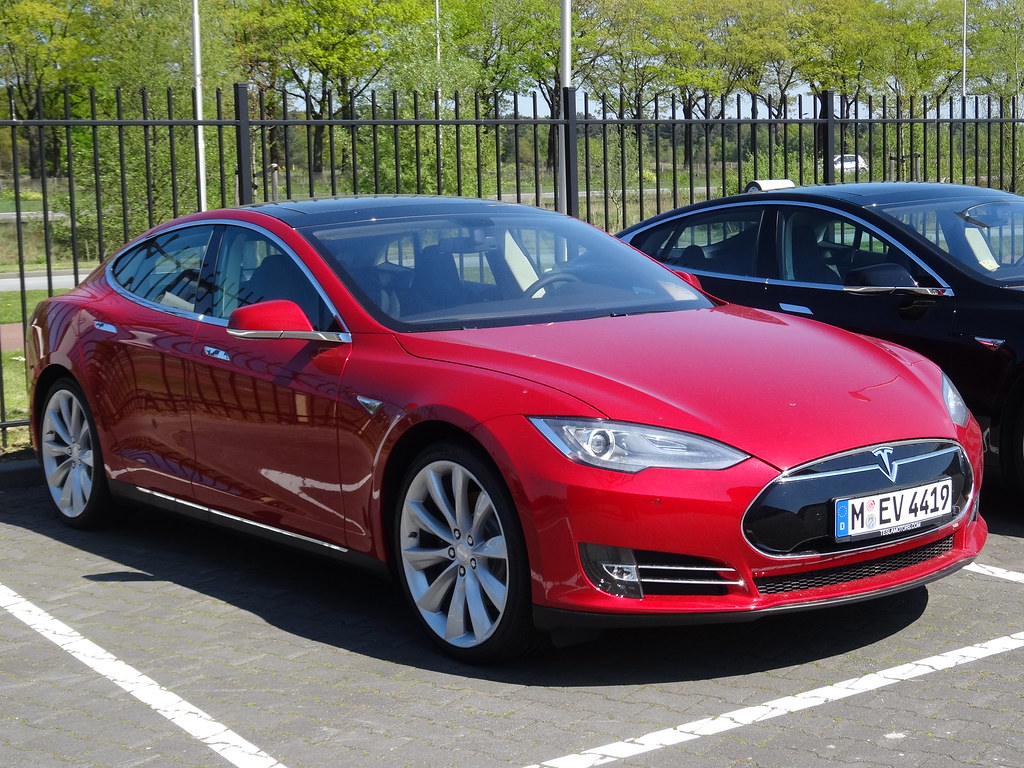
13. 2022 Tesla Model S Performance: High-Performance Excellence
While the Model S Plaid targets hypercar acceleration, the 2022 Tesla Model S Performance trim offers a compelling blend of high performance and accessible luxury. It represents another significant vehicle in Elon Musk’s journey to electric dominance, catering to enthusiasts who demand exceptional speed and handling. This model highlights Tesla’s commitment to diverse high-performance EV offerings.
The Model S Performance, though “a bit slower” than the Plaid, still boasts remarkable acceleration. It propels from 0 to 60 mph in under three seconds, placing it firmly among elite sports sedans. This performance delivers an exhilarating driving experience, showcasing the potent capabilities of Tesla’s electric powertrain in a usable package.
Furthermore, this variant maintains a strong emphasis on range, offering approximately 400 miles on a single charge. This impressive autonomy makes it a highly viable option for long-range travel, reducing range anxiety and reinforcing EV practicality for extended journeys. It solidifies its position as a top long-range electric car.
For Elon Musk, owning both the Plaid and Performance trims illustrates his deep appreciation for nuanced EV engineering. It demonstrates his ongoing involvement in the incremental improvements and varied offerings within the Tesla lineup, ensuring the brand continues to lead in innovation and market breadth.
Car Model Information: 2021 Kia Sorento S
Name: Tesla Model S
ModelYears: 2013–present
Alt: A front-three quarter view of a gray Model S
Caption: #2016–2019: First major update
Designer: Franz von Holzhausen
Weight: cvt
Height: cvt
Width: cvt
Length: cvt
Wheelbase: cvt
ElectricRange: cvt
Battery: kWh,lithium-ion battery
Motor: Unbulleted list
Transmission: Reduction drive
Related: Tesla Model X
Layout: Rear-motor, rear-wheel drive,Dual-motor, all-wheel-drive,Tri-motor, all-wheel-drive layout
BodyStyle: liftback,sedan (automobile)
Class: Full-size car
Assembly: Unbulleted list
Production: June 2012 – present
Manufacturer: Tesla, Inc.
Sp: us
Chassis: Unibody
Categories: 2020s cars, All-wheel-drive vehicles, All Wikipedia articles written in American English, All articles containing potentially dated statements, Articles containing potentially dated statements from 2025
Summary: The Tesla Model S is a battery-electric, four-door full-size car produced by the American automaker Tesla since 2012. The automaker’s second vehicle and longest-produced model, the Model S has been described as one of the most influential electric cars in the industry. Car and Driver named it one of the best cars of the year in 2015 and 2016. Its various accolades include the Motor Trend Car of the Year Award in 2013.
Tesla started developing the Model S around 2007 under the codename WhiteStar, with Henrik Fisker appointed as lead designer for the project. After a dispute with Elon Musk, Tesla’s CEO, Fisker was replaced by Franz von Holzhausen who, by 2008, had designed the production Model S’s exterior. Tesla unveiled a prototype of the vehicle in March 2009 in Hawthorne, California. In 2010, Tesla acquired a facility in Fremont, California, to produce the Model S, which was previously owned by General Motors and Toyota. Series manufacture of the car officially began at the Tesla Fremont Factory in June 2012. Tesla carried out the final assembly for European markets at its facilities in Tilburg, Netherlands, between 2013 and 2021.
Constructed mostly of aluminum, the Model S shares 30 percent of its components with the Model X—a crossover SUV that was introduced in 2015. The Model S has undergone several updates during its production, the most prominent ones occurring in 2016 and 2021. These updates have usually included modifications to the motor, such as changes to power or torque, revised exterior elements, and refreshed interior features. One such change included the 2015 introduction of Tesla Autopilot—a partial vehicle automation advanced driver-assistance system. The 2021 update led to the introduction of the high-performance, three-motor Plaid—Tesla’s most powerful model.
In 2015, the Model S was the world’s best-selling plug-in electric vehicle. In 2012, it was included on Time’s list of the Best Inventions of the Year, and the magazine later included it on its list of the 10 Best Gadgets of the 2010s in 2019. In 2014, The Daily Telegraph described the Model S as a “car that changed the world”. Road & Track argued that, with the introduction of the Plaid and features such as the yoke steering wheel, Tesla managed to turn the Model S into “perhaps one of the worst [cars in the world]”.
Get more information about: Tesla Model S
Buying a high-performing used car >>>
Brand: Tesla Model: Model S
Price: $21,490 Mileage: 58,957 mi.
Read more about: Unveiling the Top 14 Luxury Models with Surprisingly Low Long-Term Maintenance Costs
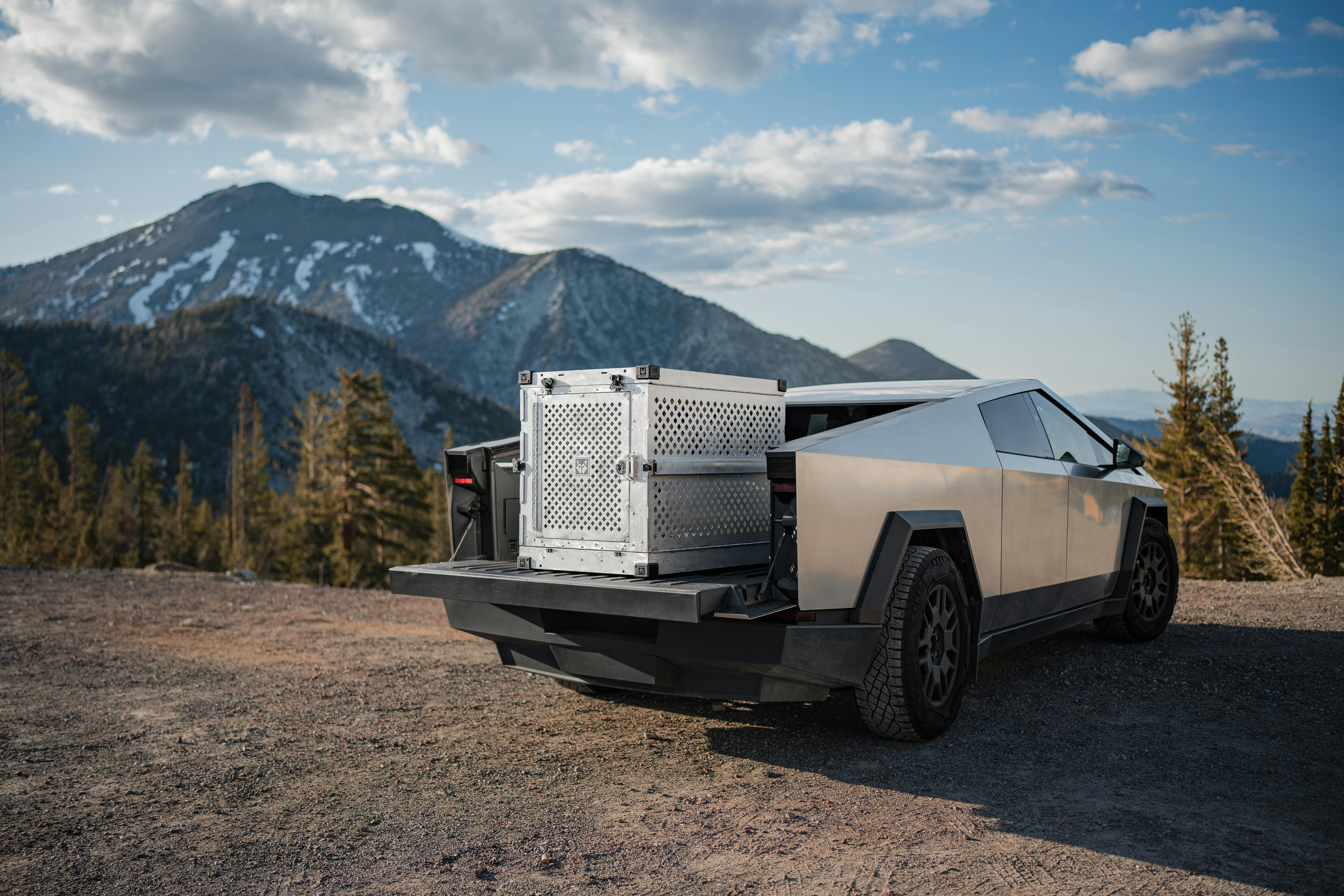
14. 2020 Tesla Cybertruck: The Futuristic Marvel
Elon Musk’s vision for the future of transportation takes a revolutionary leap with the 2020 Tesla Cybertruck, a vehicle as controversial as it is groundbreaking. Unveiled in 2019, this all-electric pickup boasts a design unlike anything seen before, echoing a 1980s sci-fi movie. It embodies Musk’s bold ambition to disrupt the truck segment, offering a distinctly futuristic alternative.
The Cybertruck is engineered with an ultra-hard 30x cold-rolled stainless steel exoskeleton and armored glass, designed for unprecedented durability and safety. While an infamous launch event saw its “bulletproof glass” shatter, the commitment to extreme resilience remains a core tenet of its design philosophy.
Beyond audacious aesthetics and rugged build, the Cybertruck is designed for formidable utility and sports car-like performance. It offers seating for six and up to 500 miles range on a single charge for its highest trim. With all-wheel drive and a 14,000-pound towing capacity, it is poised to tackle tough tasks while delivering acceleration figures rivaling many performance vehicles.
The Cybertruck offers three versions: single, dual, and three motors, with varying performance. The top-tier three-motor variant achieves 0-60 mph in a blistering 2.9 seconds and a top speed of 130 mph, blurring lines between heavy-duty pickup and high-performance sports car. This revolutionary vehicle solidifies Musk’s reputation for audacious, boundary-pushing innovations.
As we conclude our tour through Elon Musk’s extraordinary car collection, it’s clear his garage is more than luxury vehicles; it’s a narrative of his passions, curiosity, and relentless drive to redefine technology and transportation. From his first BMW to the space-faring Tesla Roadster and the audacious Cybertruck, each automobile symbolizes his journey. His eclectic taste, blending deep respect for automotive history with fierce commitment to electric innovation, offers an unparalleled glimpse into a mind that constantly challenges the status quo. Musk’s collection showcases his evolving preferences and vividly illustrates how his personal experiences fuel the creation of transformative companies, leaving an indelible mark. His garage truly is where innovation meets automotive legend, inspiring enthusiasts and innovators alike to dream bigger and drive change.


